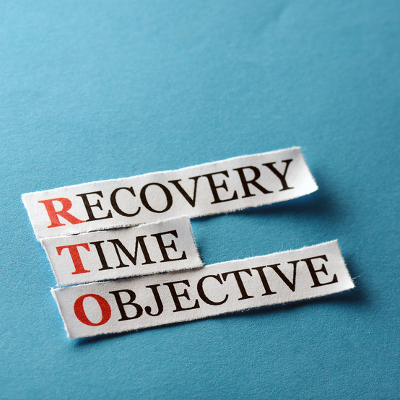Every business owner knows how important data backup is to their company’s continuity plan. They also realize that a disaster recovery solution can help save them in the event of catastrophe. However, some businesses think that they are one in the same, they are not. While they are similar, a backup is not a disaster recovery solution.
The differences are pretty clear. Data backup is designed to keep records of your information in the event you need to restore it at a later date, while the disaster recovery solution can act as a temporary server in the event of a business apocalypse, even if your original files have been destroyed. There are three things which every business should know about their data backup and disaster recovery solutions.
How Quickly Your Backup Solutions Restore Data
Data backup solutions vary widely in terms of recovery time objective (RTO), which is how quickly you can return to normal operations after a traumatic event. For example, a tape backup will take longer to completely restore your files to full capacity (up to several hours or in some cases, days). Your business requires a more modern backup solution to restore your valuable information at a quicker pace. We recommend a device which can actually act as your server in the event of an outage, making downtime practically nonexistent. Instead of crawling along with a slow backup, you can be up and running in a matter of minutes.
Downtime: The Bane of the End-User Experience
Have you ever thought about what happens inside a server when it makes a backup? This process puts an incredible strain on its processing power, limiting what it can do momentarily. This is generally why backups are performed at night, when network traffic is at its minimum. However, a business shouldn’t just make one backup per day; it should be creating multiple backups at fixed intervals to reduce the time spent returning to normal operations following a catastrophe.
This returns us to the initial problem of limited processing power. Creating multiple backups would normally grind all productivity on the server to a halt, considering how much processing power even one backup requires. This in turn negatively affects the end-user’s experience and puts your company’s reputation at risk. The reason a backup takes so much time to process is because it’s literally taking snapshots of every single one of your files. Instead of having your backup solution do this, it’s far more efficient to have it only backup files that have been recently changed. This way, you get the same result multiple times a day. All of your files will be backed up, even those files you created several years ago and haven’t touched since.
Automated Recovery is inarguably better and more efficient.
When it comes to rebooting after a disaster, it never happens fast enough, especially if you have a lot of work to get done. The best option for your business is an automated backup solution designed to perform your backup immediately in the face of disaster, without causing downtime. This process is surprisingly quick, and is usually completed within a few minutes. This reduces the margin for error, and your business can return to operations quickly and efficiently, provided your hardware still exists.
Quikteks’ Backup and Disaster Recovery (BDR) solution integrates a powerful data backup process with fast disaster recovery services, helping your business get back on track following catastrophe. We’ll even test your backups and ensure they work for optimal recovery time objective. For more information about our BDR solution, give us a call at (973) 882-4644.

